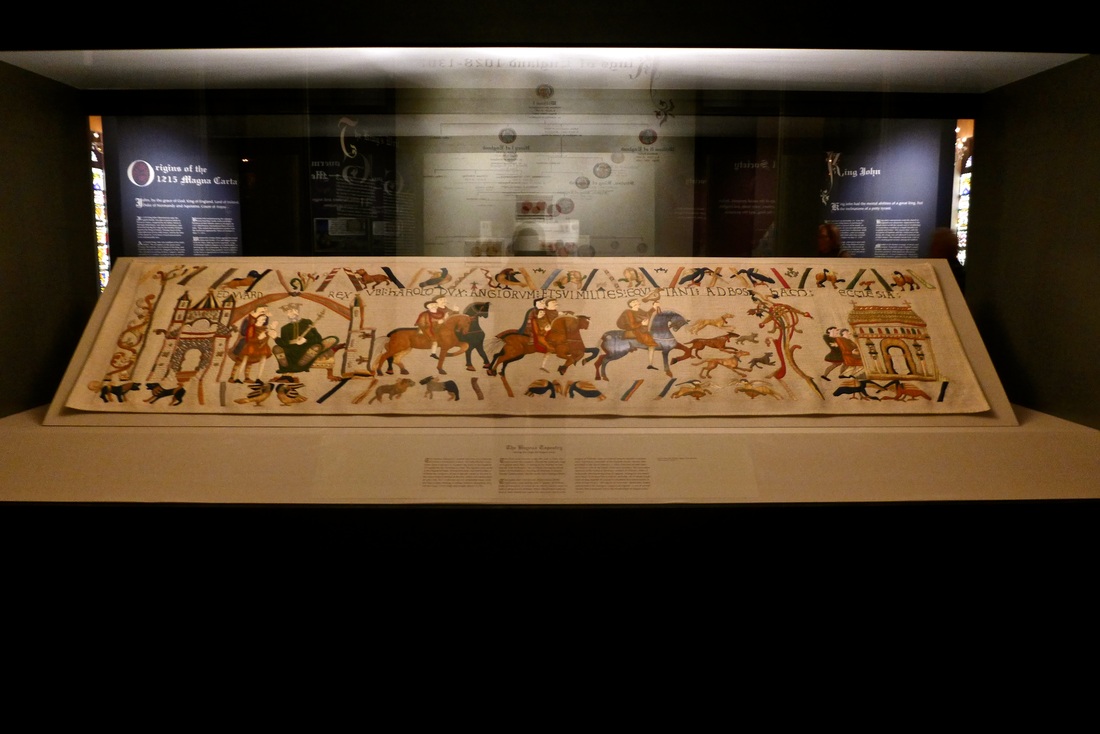Earlier this year, I was fortunate enough to go to the United Kingdom and visit the home of the Magna Carta, which is currently on display at HMNS.
 Located in the town of Hereford (which may sound familiar because of the Hereford breed of cattle that comes from the same area) this 1217 Magna Carta was discovered in the library of Hereford Cathedral. I was excited to see its chained library and another of Hereford Cathedral’s historical documents, the Mappa Mundi.
Located in the town of Hereford (which may sound familiar because of the Hereford breed of cattle that comes from the same area) this 1217 Magna Carta was discovered in the library of Hereford Cathedral. I was excited to see its chained library and another of Hereford Cathedral’s historical documents, the Mappa Mundi.
The Cathedral is quite large, so it was easy to spot as I entered the city. I had some free time to explore all the chapels and prayer rooms of the Cathedral before I met with the Chancellor of Hereford Cathedral, Reverend Chris Pullin. Luckily, he offered to take me on a tour of the Cathedral to see the Mappa Mundi, the chained library and the cloisters.
 First stop, Mappa Mundi, the largest medieval map in existence. Created on calf skin, this map references large cities of the late 13th and early 14th centuries, from Jerusalem to Rome to the current home of the Mappa Mundi, Hereford. The map also depicts mythological creatures and biblical events. Although the Mappa Mundi only measures 5 feet 2 inches by 4 feet 4 inches, it contains most of the known world at the time, including Europe, Asia and Northern Africa — an impressive feat for the medieval cartographers.
First stop, Mappa Mundi, the largest medieval map in existence. Created on calf skin, this map references large cities of the late 13th and early 14th centuries, from Jerusalem to Rome to the current home of the Mappa Mundi, Hereford. The map also depicts mythological creatures and biblical events. Although the Mappa Mundi only measures 5 feet 2 inches by 4 feet 4 inches, it contains most of the known world at the time, including Europe, Asia and Northern Africa — an impressive feat for the medieval cartographers.
Just beyond the doors to the Mappa Mundi lies the chained library, which was the next stop on our tour. I was looking forward to seeing the real one after having seen the mock-up created for our exhibit at HMNS. The library was designed with chains to prevent people from walking away with the handwritten books, which were costly and time-consuming to make.
Although the chained library in Hereford looks like an exhibition, it is still a functional library. Visitors can look at illuminated manuscripts from the 12th century or even more recent additions to their collection.
 The last stop on the tour was a visit to the college cloisters. Although these areas are not open to the general public, the education department at the Cathedral uses them for educational tours to show what life was like during Tudor England. Although many of these cloisters have been remodeled, there is a section that shows how the cloisters would have looked in the original wattle and daub. This method involved creating latticework out of reeds and sticks and covering the woven frame with mud. The result is a sturdy wall that was used to build homes like the cloisters in Hereford.
The last stop on the tour was a visit to the college cloisters. Although these areas are not open to the general public, the education department at the Cathedral uses them for educational tours to show what life was like during Tudor England. Although many of these cloisters have been remodeled, there is a section that shows how the cloisters would have looked in the original wattle and daub. This method involved creating latticework out of reeds and sticks and covering the woven frame with mud. The result is a sturdy wall that was used to build homes like the cloisters in Hereford.
My trip to Hereford was short and sweet, and definitely worth the trek to see the official home of the Magna Carta of 1217 — not to mention the Mappa Mundi and chained library!
Bummed that Hereford is so far away? Me too, friend. Luckily the Magna Carta is now at the Houston Museum of Natural Science. From stained glass to the chained library, we’ve captured the feeling of Hereford in H-Town. Don’t miss out!
For more information about the Magna Carta or to plan your visit to HMNS, click here.







